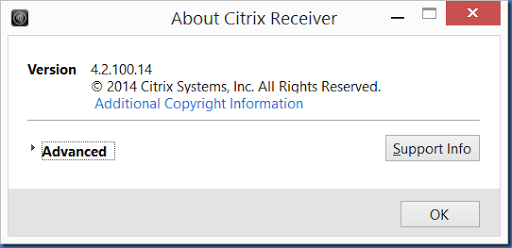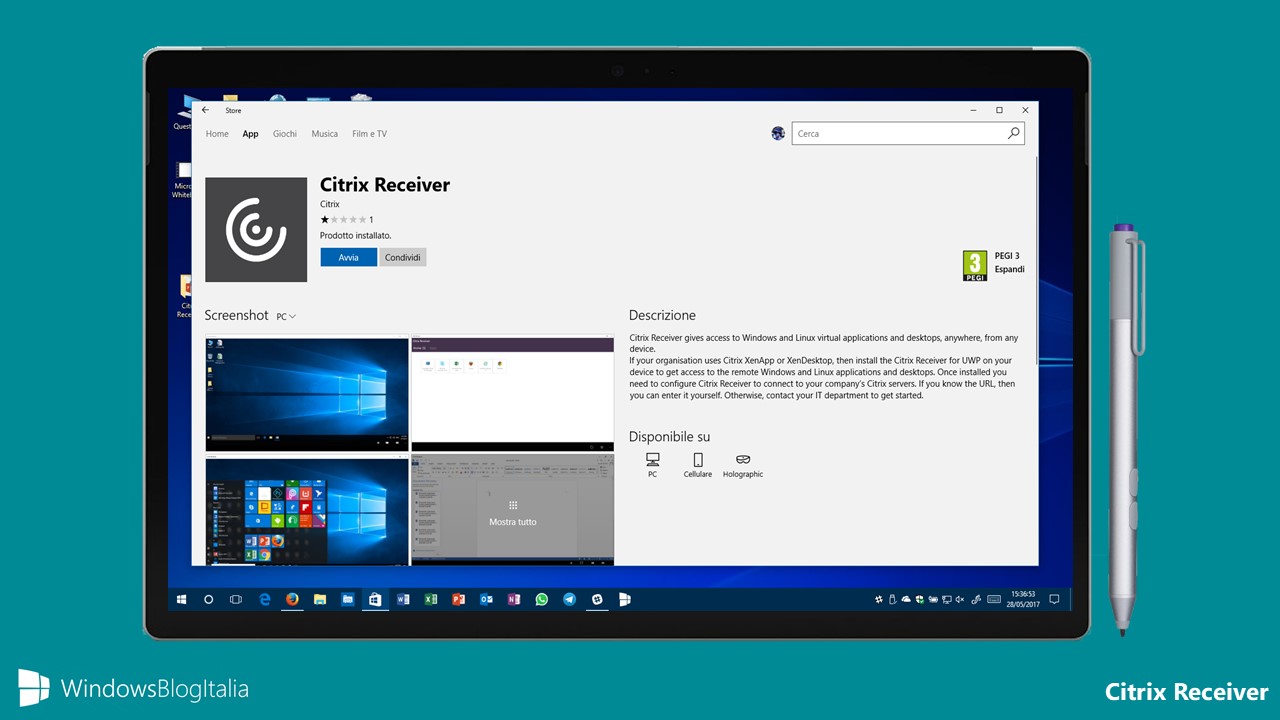

- #CITRIX RECEIVER 4.3.100 DRIVER#
- #CITRIX RECEIVER 4.3.100 WINDOWS#
Aero must be used/enabled on the VDA for DCR to work.

Not suitable on low bandwidth connections. For this reason DCR will want your bandwidth and client CPU.
Anything sent to DWM (Desktop Window Manager) is instead redirected to Receiver on the users device to perform the composition. Desktop Composition Redirection (DCR) – (Deprecated in XenApp and XenDesktop 7.12). What are the five HDX display modes I mentioned? #CITRIX RECEIVER 4.3.100 DRIVER#
This user mode graphics driver works closely with WDDM and is responsible for encoding what you see with your eyes on the screen, when connected to a VDA and passing that data to Receiver which runs on your client device, which is then decoded and displayed. The driver we are interested in is called CTXGFX.EXE. So with these changes to the driver stack within Windows, Citrix had to rewrite their graphics driver to be compatible with WDDM. Specific enhancements introduced in each version are explained at. Prior to DWM (using old display model) each program was reponsible for updating it’s own window in the display mode.
#CITRIX RECEIVER 4.3.100 WINDOWS#
Note: Desktop Window Manager was introduced in Windows Vista. Allows Windows to use features provided by Desktop Window Manager such as Aero effects like Aero Glass, Aero Peek, Aero Flip and more.Better performance and more reliable than previous models.
 Graphics command scheduling so more critical tasks can run in priority to improve user experience. Previously with XDDM/XPDM the whole system would crash with a blue screen error as it ran within the kernel. This means that if a WDDM driver fails at most the affected application will quit unexpectedly. XDDM/XPDM was eventually excluded from Windows 8/Server 2012 and above leaving WDDM as the only available option. I guess Microsoft wanted to correctly transition towards the new model. Even though WDDM was the new model, Windows Vista/Windows 7/Server 2008R2 OS could still make use of XDDM/XPDM. Since the Windows XP/Server 2000 days the XDDM/XPDM (Windows XP Driver Model) display driver model was used right up until Windows Vista/Windows 7/Server 2008R2 which saw a new model called WDDM (Windows Display Driver Model) introduced. Let’s talk about how Citrix evolved from having one mode to the now current five different types of graphics modes: If clients did not support the default H.264 codec that is used with setting Use video codec for compression, then a fallback to ThinWire+ (ThinWire compatibility mode) occurred. In previous versions of XenDesktop 7.x DCR was enabled by default for Desktop OS machines but is now disabled by default in the latest versions. In XenApp and XenDesktop 7.6 FP3+ Use video codec for compression was made the default setting for client devices that supported it. Citrix XenApp and XenDesktop 7.x provide by default policy settings that will fit most graphical experience use cases without the need for additional configuration. ThinWire is always evolving to keep up with hardware, operating systems, networks and other components that make up XenApp/XenDesktop. This will help you make decisions going forward and re-evaluate decisions with new deployments. Note: When upgrading Sites, benchmark current performance metrics to get an idea of what experience users currently get. Upgrading Citrix deployments and not sure what to choose?. Do you want to improve the user experience?. Which HDX display mode should you be using? There’s no quick and easy answer as the real question is which mode will fit in to your infrastructure and business/user requirements. Desktop Composition Redirecton (DCR) (Deprecated in XenApp and XenDesktop 7.12), ThinWire Legacy, ThinWire+, Framehawk (deprecated in Virtual Apps and Desktops 1811).
Graphics command scheduling so more critical tasks can run in priority to improve user experience. Previously with XDDM/XPDM the whole system would crash with a blue screen error as it ran within the kernel. This means that if a WDDM driver fails at most the affected application will quit unexpectedly. XDDM/XPDM was eventually excluded from Windows 8/Server 2012 and above leaving WDDM as the only available option. I guess Microsoft wanted to correctly transition towards the new model. Even though WDDM was the new model, Windows Vista/Windows 7/Server 2008R2 OS could still make use of XDDM/XPDM. Since the Windows XP/Server 2000 days the XDDM/XPDM (Windows XP Driver Model) display driver model was used right up until Windows Vista/Windows 7/Server 2008R2 which saw a new model called WDDM (Windows Display Driver Model) introduced. Let’s talk about how Citrix evolved from having one mode to the now current five different types of graphics modes: If clients did not support the default H.264 codec that is used with setting Use video codec for compression, then a fallback to ThinWire+ (ThinWire compatibility mode) occurred. In previous versions of XenDesktop 7.x DCR was enabled by default for Desktop OS machines but is now disabled by default in the latest versions. In XenApp and XenDesktop 7.6 FP3+ Use video codec for compression was made the default setting for client devices that supported it. Citrix XenApp and XenDesktop 7.x provide by default policy settings that will fit most graphical experience use cases without the need for additional configuration. ThinWire is always evolving to keep up with hardware, operating systems, networks and other components that make up XenApp/XenDesktop. This will help you make decisions going forward and re-evaluate decisions with new deployments. Note: When upgrading Sites, benchmark current performance metrics to get an idea of what experience users currently get. Upgrading Citrix deployments and not sure what to choose?. Do you want to improve the user experience?. Which HDX display mode should you be using? There’s no quick and easy answer as the real question is which mode will fit in to your infrastructure and business/user requirements. Desktop Composition Redirecton (DCR) (Deprecated in XenApp and XenDesktop 7.12), ThinWire Legacy, ThinWire+, Framehawk (deprecated in Virtual Apps and Desktops 1811).







 0 kommentar(er)
0 kommentar(er)
